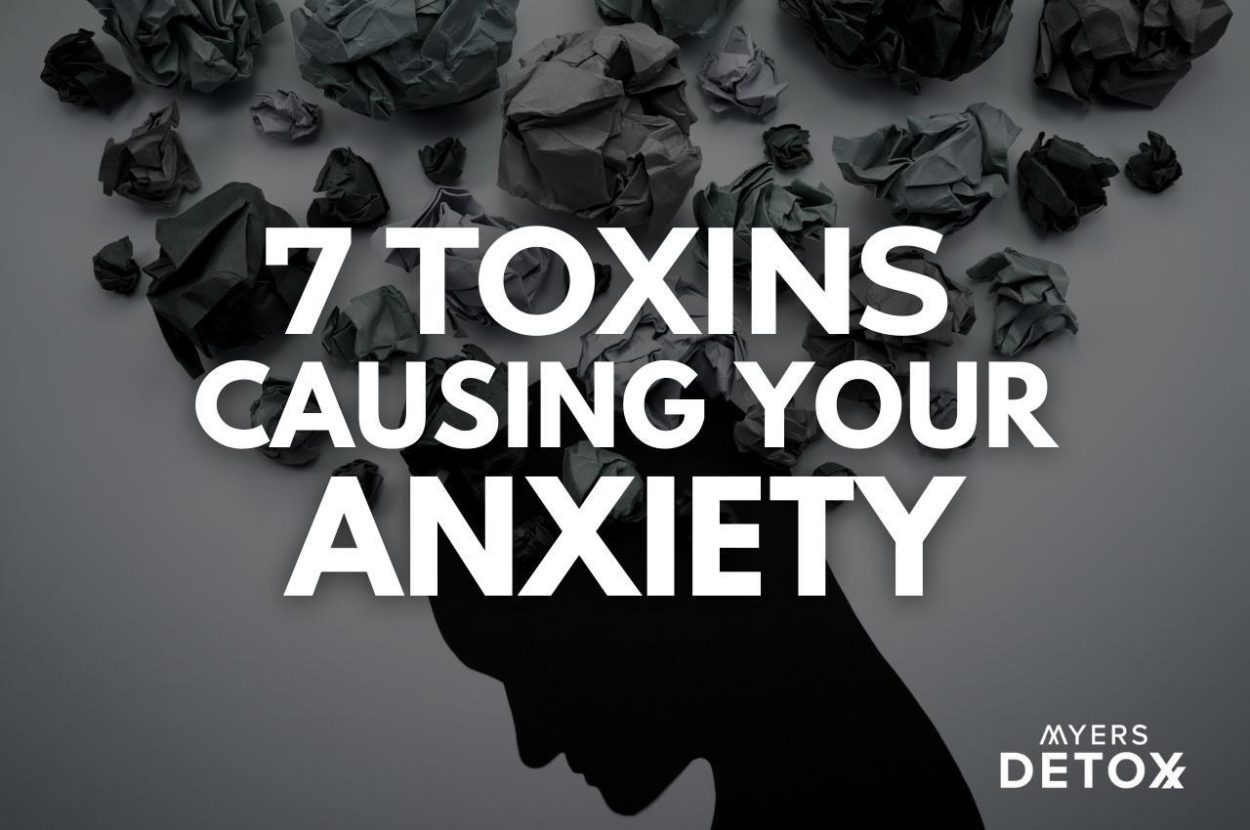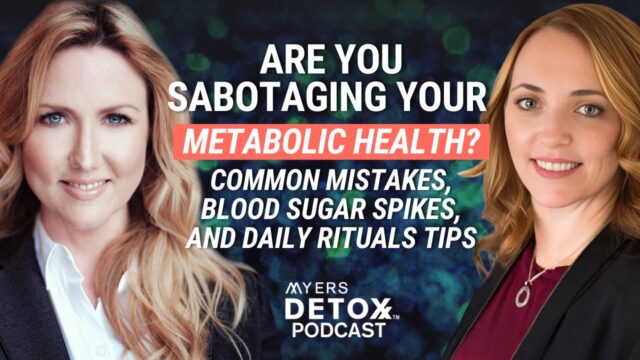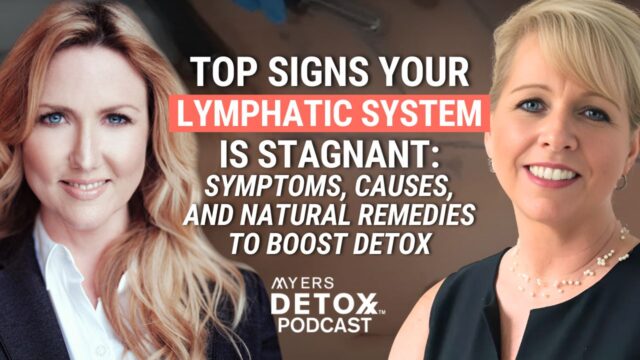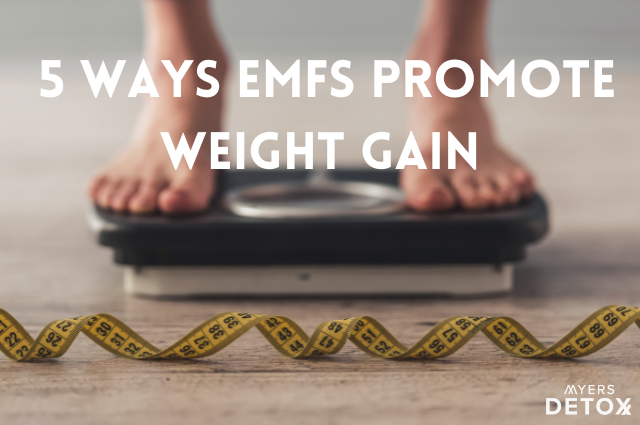Anxiety is a word that’s thrown around a lot these days as the impact of stress on your mind-body system comes closer into focus. But what does it mean to be anxious? And what causes anxiety?
In this article, you’ll learn:
- What is anxiety?
- Causes of anxiety
- How heavy metal exposure can set you up for anxiety disorders
What Is Anxiety?
Anxiety will show up differently for everyone, but some key characteristics of anxiety include[1]:
- Feeling of overwhelm
- Hypervigilance
- Nervousness
- Rapid breathing
- Sweating
- Trouble sleeping
- Increased heart rate
- Gastrointestinal issues
- Phobias
- DIfficulty controlling worrying
On the one hand, it’s completely natural to be a little anxious about events that you’re unsure about, a speech you have to give, a blind date, an important meeting with your boss. However, there’s a distinct tipping point between a passing state of anxiousness centered around one event, and having a true anxiety disorder.
Anxiety disorders can be debilitating and all-encompassing, getting in the way of normal work life, family life, and potentially impacting your physical health. So, how common is this type of anxiety?
The Anxiety and Depression Association of America (ADAA) states that while almost every person experiences occasional anxiousness around certain events, nearly 40 million people in the United States experience anxiety disorders in a given year. That’s 18% of the population.
What’s more, approximately 8% of children and teens experience an anxiety disorder before the age of 21[2].
Causes Of Anxiety
If you’re someone who experiences anxiety, then getting to the root of the problem is your only true solution. There are many potential causes of anxiety, but the most common include:
- Stress
- Nervous system stuck in fight or flight
- Heavy metals
- Lack of energy to cope with stressors
- Mineral deficiency
- EMFs like wireless internet and cell phones
- Trauma
Let’s take a closer look at each.
Stress

Many people today are stuck in a constant state of stress. Whether it’s issues at home, work-life, or even social pressures, the constant state of unrest without the proper time and space to decompress can put your body into a state known as sympathetic dominance.
This is a state of your body’s autonomic nervous system in which your body is in fight or flight mode. While thousands of years ago the fight or flight response served to save you from predators in the wild, today sympathetic mode often gets stuck on the “on switch,” and results in a nervous system that’s hypersensitive.
The unfortunate side effect of low-level persistent stress is that many people are so used to this way of being, that they don’t even realize it’s stress.
When you’re in sympathetic mode, your body reacts to the smallest stimulation as if it were a threat, often over-reacting and causing anxiety and even panic attacks.
Even if you don’t feel stressed due to personal life happenings, your body may be under a tremendous amount of stress from nutritional and mineral deficiencies, trauma (anything you were not emotionally ready to handle), EMF’s, heavy metals, illness, pain, and the fast pace and isolation of our modern lifestyle.
Heavy Metals

Millions of people have too much copper, lead, cadmium, mercury, nickel, aluminum, and toxic forms of iron and manganese in their bodies.
These settle in various parts of the brain, irritate the nervous system and contribute to anxiety and panic attacks.
Heavy metals cause interference with neurotransmission and brain communication – many different metals reduce levels of neurotransmitters responsible for mood stability like serotonin, dopamine, and GABA[3][4].
Mercury
Mercury is a heavy metal that’s found in amalgam fillings and is a common contaminant in fatty fish like tuna and mackerel[5]. The devastating health effects of mercury exposure are well-known, which is why dentists are moving away from mercury fillings, and health-conscious tuna companies test their product before putting them on the shelves.
(note: unless it explicitly states “tested for mercury” on the can, you can be sure they did not test.)
Mercury is toxic to your brain cells, inhibiting nerve cell function, and even causing cell death. What’s more, this heavy metal blocks the synthesis of serotonin, a neurotransmitter that’s responsible for stabilizing your mood. Serotonin is also a precursor to melatonin — the hormone that helps you sleep well[6][7].
Low serotonin and lack of sleep are two factors that can result in increased anxiety — making mercury exposure a double whammy[8][9][4].
When you consume or absorb mercury, it’s deposited throughout your brain, especially in the hypothalamus, hippocampus, and pituitary gland. Your hypothalamus is responsible for thyroid signaling, your hippocampus is crucial for emotional regulation, and the pituitary gland (also known as the “master gland”), regulates the function of several networks of hormones throughout your body[10][11].
The hormonal dysregulation that can result from high levels of mercury strongly impacts your central nervous system and can lead to symptoms like irritability, fatigue, tremors, hearing loss, and even hallucinations[12].
Lead
Lead toxicity affects every system in your body — but is most detrimental to your brain and nervous system. This heavy metal can be found in gasoline, paint, pipes, book printing, pottery, car repair, boat building, and many other industrial and environmental outlets[13].
Research shows that exposure to lead can interfere with the proper functioning of your brain, inhibiting the production of neurotransmitters and other neurochemicals, and impairing the growth and development of your prefrontal cortex.
In children, this shows up as issues such as low IQ, aggressive behavior, impaired cognitive development, and psychological disturbances like anxiety and depression. These symptoms are likely due, in part, to lead’s affinity for the hippocampus[13].
Lead can also inhibit your body’s ability to make heme, an essential complex that carries oxygen to your tissues. Your cells need oxygen in order to create energy so they can function properly. When lead interferes with this process, the energy metabolism of your cells takes a hit[14].
This is one of the reasons that lead toxicity is often associated with chronic fatigue, depression, and cognitive impairment[15]. When your brain can’t get the energy it needs, it simply cannot function properly.
Research shows that even at levels generally considered “safe,” lead exposure can result in mental health issues like major depression and panic disorders[16].
Aluminum
Aluminum is a neurotoxin that displays a range of harmful effects on your central nervous system. Most people come into contact with aluminum through contaminated water, foods, food additives, and cooking equipment and utensils.
Several neurological diseases have been associated with aluminum exposure, including Alzheimer’s disease, Parkinson’s disease, and Multiple Sclerosis[17].
The role of aluminum in these diseases is still being studied, but some of the ways in which aluminum may contribute include[17]:
- Inducing brain inflammation
- Increasing oxidative stress in the brain
- Impairing your brain’s ability to use energy by negatively impacting your mitochondria
- Increasing aggregation of amyloid plaques
While anxiety isn’t considered a neurological disease, it’s easy to see how the effect that aluminum has on the brains of those suffering from neurological disease could pave the way for anxiety disorders.
For instance, research shows that there’s a strong correlation between inflammation in the brain and mood disorders like anxiety. In addition, research shows that mitochondrial dysfunction and oxidative stress are associated with increased anxiety[18][19].
Finally, aluminum exposure results in something called microglial activation. Your microglia are immune cells that function in your central nervous system to fend off invading microorganisms, tumors, and repair damage following trauma.
While these functions are all helpful and necessary, overactivation of your microglia can result in brain inflammation leading to brain fog, cognitive decline, anxiety, and depression. The activation of microglia is actually seen as a hallmark of brain pathology[20][21].
Low Energy Production
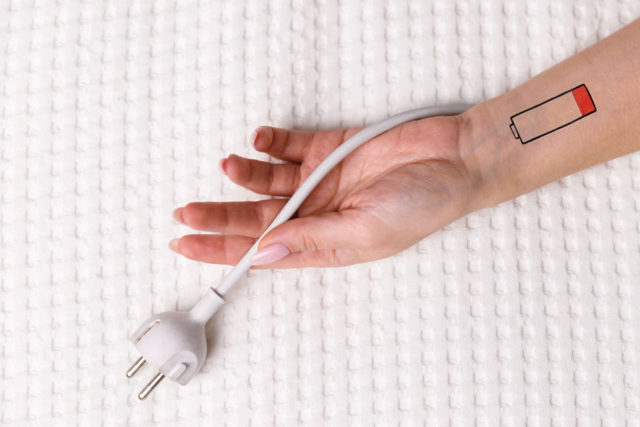
Energy production is absolutely essential for the proper function of every cell in your body. If your cells and tissues don’t have the energy they need to keep things moving, the production of hormones, neurotransmitters, proteins, DNA, etc. will slow down and affect every aspect of your health.
Your mitochondria, which are responsible for producing your body’s energy, are poisoned by heavy metals like aluminum, lead, arsenic, cadmium, and tin. These metals, which have an affinity for your brain tissue, cause oxidative damage, which interferes with the synthesis of protein and functions of organelles within your cells. When your mitochondria become impacted, energy resources become limited, and organs like your brain feel the adverse effects[22][23][24].
In fact, it appears that your brain may be the most vulnerable organ when it comes to the detrimental effects of mitochondrial dysfunction. This can be exemplified by the profound effect that physical exercise has on brain function.
When you get enough movement and exercise, it drives energy to your brain. Research shows that regular movement can act as an effective intervention for treating depression, age-related cognitive decline, and neurodegenerative diseases.
Without this steady flow of oxygen to your brain, your brain cells are unable to communicate properly, and dysfunction like anxiety and depression could result[25].
Mineral Deficiency

Minerals are crucial nutrients that power up your cells and keep enzymatic processes going in your body. Without proper mineralization, your body wouldn’t be able to carry out the vast vital functions it needs to survive. Bottomline: you must have adequate intake of minerals in order to feel calm and relaxed.
Unfortunately, the U.S. population is woefully deficient in a number of these crucial nutrients. For instance, it’s estimated that 52% of the population is deficient in magnesium, 43% in calcium, and close to 100% are deficient in potassium.
Several other minerals, including copper, zinc, iron, and selenium are also under-consumed by the general public[26].
Why are we so deficient in minerals?
One reason is simply due to the lack of nutrients in our soil. Years ago, our soil was a rich bed of vitamins and minerals that would nourish the plants grown in it, and eventually end up nourishing our cells when we ate those plants.
Unfortunately, modern agriculture has left our soil depleted of these vital nutrients[27].
Another reason that your body may be missing out on key minerals is due to stress. Research shows that stress has a mineral-depleting effect on your body. Although the exact mechanisms for why each mineral becomes depleted aren’t clear — what is clear is that the more stress you have, the more likely you are to have mineral deficiencies[28].
One potential link between stress and mineral depletion is the effect that stress has on your digestion. If you aren’t digesting your food properly, you won’t be able to absorb and assimilate the nutrients in it optimally.
When it comes to nutrients needed to calm anxiety, there are a handful of minerals that are absolutely essential to the process; namely, zinc, magnesium, and calcium. When these nutrients are low, your body becomes very prone to feelings of anxiety, your nervous system can’t relax, and you can’t get proper sleep[29][30][31].
Many people find that within a few weeks of supplementing with zinc and magnesium (along with other trace minerals), they begin to feel more calm and relaxed, and experience improved sleep[32][33]. Essentially, your nervous system cannot relax without a certain level of minerals and trace minerals.
EMF Toxicity

While modern technology can be an absolute blessing at times, the consequences of having the world at your fingertips may outweigh the ease at which you can google any question that pops into your head.
EMFs (electromagnetic fields) are low-frequency radiation waves that have polluted our airspace and have a direct impact on both your mind and body. Every living object (including you) has a field of energy that surrounds it. For the human body, we call it the biofield[34].
When this field of energy comes into contact with EMF radiation, it causes disruption in the energy. The knowledge of how this field of energy affects our physical health is well understood by energy healers, and ancient forms of medicine like Ayurveda and TCM have taken this into account for thousands of years.
So how does this relate to anxiety?
Research shows that EMF radiation increases stress and sleep disturbances, and can lead to depression and anxiety[35].
EMFs can directly affect neurotransmitters like serotonin, dopamine, and norepinephrine that are responsible for your stress response as well as mood regulation. In one animal study, researchers found that after being exposed to EMFs levels of these three crucial neurotransmitters were significantly decreased in four key brain regions[36].
That’s right, the cell phone you hold up to your head could be directly frying the neurotransmitters you need to feel good.
What’s more, these radiation waves are also known to affect memory and concentration, and induce brain fog — all of which can exacerbate anxiety[37].
Trauma

Emotional trauma is a huge contributor to anxiety. When you have a traumatic experience, it creates a neurological pathway in your brain that says “beware of situations like this, it’s dangerous.” While this can be helpful in some cases (example: don’t touch the hot stove or you’ll burn your hand), in other cases, it can set you up for unnecessary fear and anxiety.
Common emotional responses to trauma include[38]:
- Numbness
- Changing emotions (shock, denial, guilt)
- Sadness and crying
- Irritability, tension, anxiety
- Difficulty concentrating
- Isolating
- Changing in eating and sleeping
- Increased use of drugs or alcohol
Over time, if the trauma isn’t addressed, it can set you up for deep unconscious programming that leaves you feeling anxious and unsafe in the world.
Another thing that many people may not be aware of is how trauma creates a cascade of events that prevent the body from detoxing metals that contribute to anxiety.
Niki Gratrix, an expert in emotional trauma, has postulated that trauma contributes to a condition called Pyroluria. Pyroluria causes a zinc deficiency, which then prevents mercury and other heavy metals from being detoxed from your body[39].
This creates a double-edged sword where both emotional responses to trauma, along with nutrient deficiencies, result in increased levels of anxiety.
Luckily, by addressing and releasing trauma, as well as supplementing minerals, over time, this condition can be reversed in most people — unless you have a genetic tendency toward Pyroluria.
Takeaway
Anxiety is a complicated subject, but the good news is that it’s not only treatable — but there are a number of natural ways to reduce your tendency towards anxiety.
If you struggle with anxiety, your number one goal should be to support your body’s ability to manage stress. This means helping your body to naturally clear any toxins you may be holding in your cells and tissues, as these chemicals have a profound impact on anxiety and may even be an underlying cause.
But how do you know what contaminants are in your body in the first place?
The quickest and most affordable way to determine if you have heavy metals in your body is a hair mineral analysis.
The HTMA assesses not only which metals you have in your body but it will also show you which minerals are deficient. Together, this information is incredibly empowering, as it help you to:
- Identify the heavy metal contaminants in your body and examine your sources of exposure
- Shield yourself from further exposure to sources of these toxic health hazards
- Take actionable steps so that you can support the body’s natural excretion of these pollutants from your system
- Support and maintain a clean and healthy lifestyle
But before you can begin working on your anxiety, supporting your health, and detox from everyday living, you must know your deficiencies or toxicities. The HTMA is your vital first step in this process.
In addition, protecting yourself from EMFs will go a long way in calming your nervous system as well as consuming adequate minerals in the form of nutrient-dense foods.
And of course, dealing with any underlying trauma is essential if you want to get to the root of the fears that may be holding you back in life.
Some people suffer from depression and confuse it with anxiety. To learn more about depression, you can check out my article on the Little Known Causes of Depression, which have a few overlaps with the causes of anxiety discussed here.
*Please note that A Hair Mineral Analysis (HTMA) is not intended to diagnose, treat, cure, reverse, or prevent any disease. It is not intended to replace any other medical test(s) that may be prescribed by your medical doctor.


